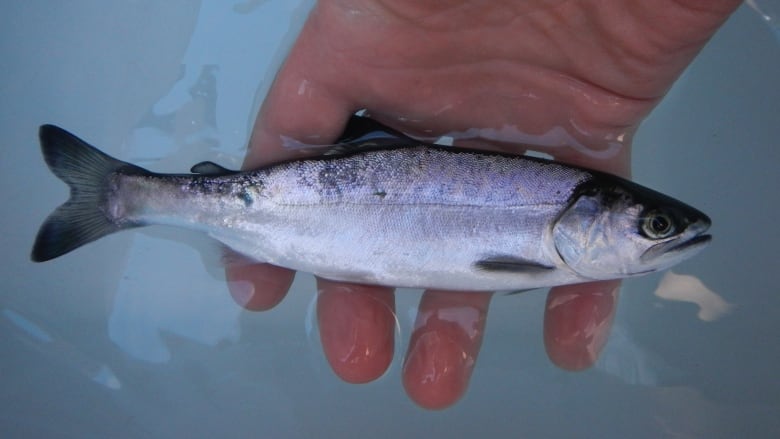Hybrid salmon discovered by scientists on Vancouver Island
Fish found in Cowichan River have genes of both coho and chinook salmon

Two salmon researchers say a surprising discovery has been made on Vancouver Island.
Andres Araujo, a biologist at the Department of Fisheries and Oceans, and Will Duguid, a PhD biology student atthe University of Victoria, recently found fishin the Cowichan River, north of Victoria, B.C., that have the genes of both coho and chinook salmon.
Tissue samples revealed the fishare second-generation hybrids, meaning they are the spawn of hybrids.
The hybrid fish, according to Araujo and Duguid, are a rare find in Canada and are likely the result of drought in the Cowichan watershed, which has impacted when and where coho and chinook spawn.
"For a hybrid to exist we need overlapping spawning grounds and timing," said Araujo, notingthat chinook usually spawn in September and October, whereas coho traditionally spawntoward the end of October until December. He said when summer droughts extend into fall it can pushchinook spawning season back into when coho are also starting to spawn.

Duguid said there are some fish that routinelygenerate hybrids such as rainbow trout and cutthroat trout but not wild salmon.
"Apparently, it rarely occurred in the past and there has never been documentation of hybridization into the second generation," said Duguid.
He said a member of the Cowichan Tribesspotted the first hybrid in the river during an adult fish tagging study being done in partnership betweenthe First Nation and the province.
Duguid said the hybrid fish can sometimes be identified by their abnormal scale arrangement, which is not patterned evenly on either side of their lateral line.
"This is indicative of the fact there may be other abnormalities that we can't see," said Duguid.
He said the hybridsare also identifiable by the degree of spotting on their tails, the shape of their anal fins and the morphology and colouration of their mouths.

The duo saidhuman activity, such as forestry practices and climate change, are also changing the landscape of the Cowichan River region and also likely played a role in causing the hybridization.
"You are seeing a biological response to potentially an anthropogenic, or human-caused, forcing," said Duguid.
Araujosaid it is too soonto know if the chinook-coho hybrids are part of an evolutionary process. The hybrid fish have not yet been named.
With files from Adam van der Zwan












_(720p).jpg)


 OFFICIAL HD MUSIC VIDEO.jpg)
.jpg)



























































































